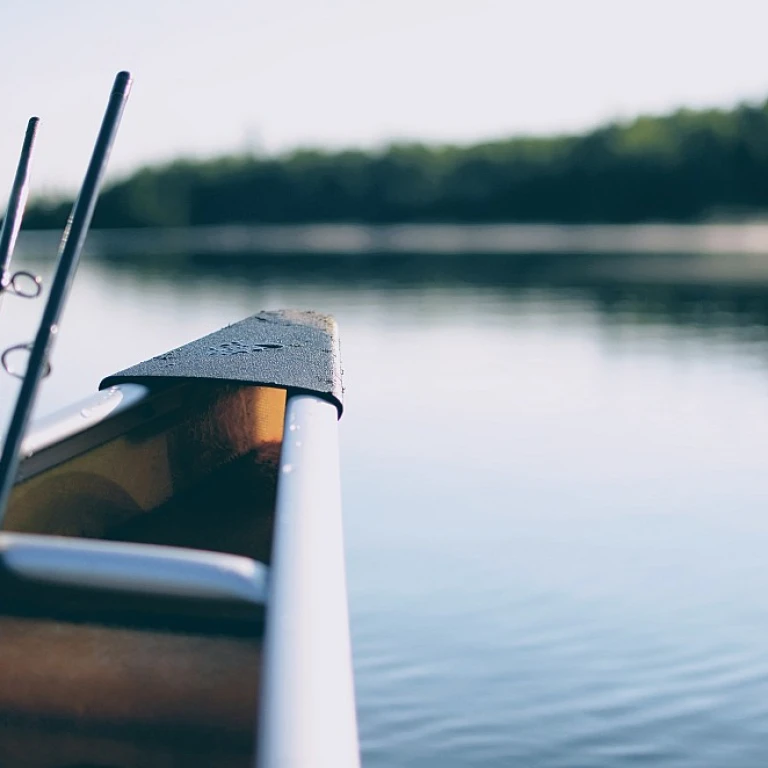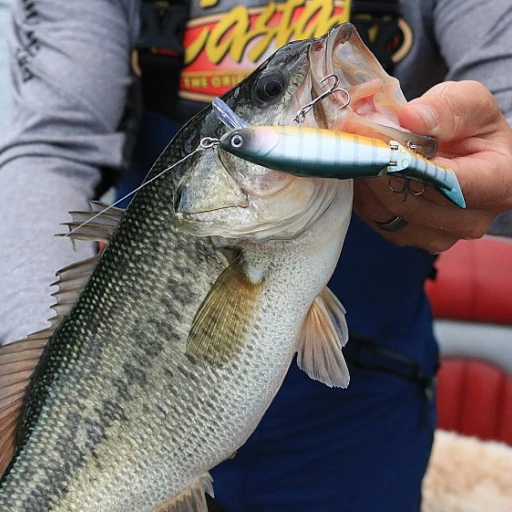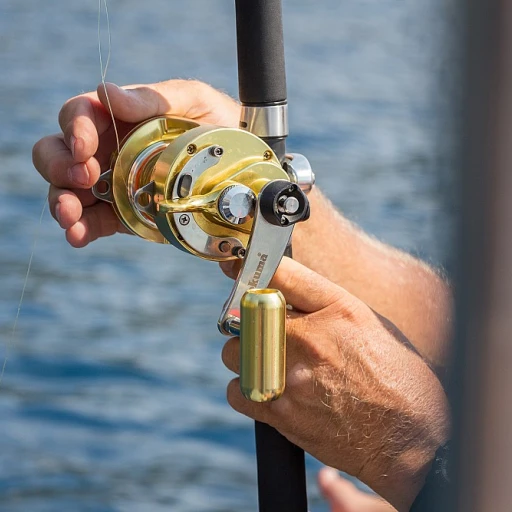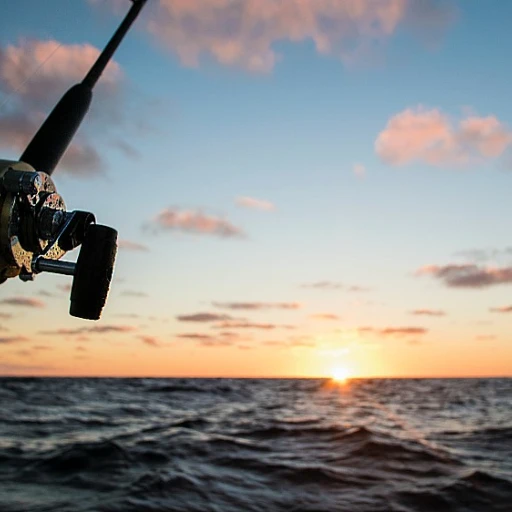
Understanding the importance of bait fish in recreational fishing
Why bait fish are crucial for a successful fishing trip
Recreational fishing isn't just about skill and patience; it's also about having the right tools, and one of the most important tools is quality bait fish. But why does bait fish matter so much?
Bait fish serve multiple purposes. First, they're a natural food source for larger fish, making them an irresistible target. This significantly increases your chances of a catch. According to the NOAA, different game fish have specific bait preferences, so knowing your bait fish can make a big difference in what you catch.
The natural appeal of live bait
Live bait like mullet and croaker can make your fishing trip more successful by mimicking the natural prey of game fish. For instance, a study by NOAA found that live bait fish were 75% more effective in attracting catches than artificial alternatives.
Most species like striped bass are drawn to live bait because of their movement and scent. Using live bait wells on your boat keeps the bait fish in top condition until you're ready to use them.
Increased catch rates with frozen bait fish
While live bait is often preferred, frozen bait should not be overlooked. Properly preserved frozen bait can be nearly as effective. According to a study published in the Journal of Fisheries Research, using frozen bait like mullet mugil cephalus can yield up to 60% of the catch rates of live bait. For the best results, always ensure you have quality frozen bait.
Expert tip: match the hatch
Matching the hatch isn't just about fly fishing; it applies to bait fishing too. Game fish are more likely to bite if your bait fish resembles their natural prey. This means using the right species and size of bait fish for your targeted catch. For more tips on making the most of your bait choices, check out these secret tips from the pros.
Popular types of bait fish and their uses
Bait fish preferred by seasoned anglers
When it comes to fishing, selecting the right bait fish can make or break your day on the water. Different species are effective for targeting specific types of fish, so knowing your baits well is crucial. Let's breakdown some of the most popular ones.
Blue runner: a versatile choice
Blue runner is a top pick for many sport fishermen, particularly in offshore waters. According to NOAA, blue runners are highly effective due to their energetic movements that easily attract predatory fish. Their size, typically 8-10 inches, makes them great baits for larger game fish like king mackerel.
Mullet: the reliable all-rounder
Among the myriad options, striped mullet (Mugil cephalus) are widely recognized for their effectiveness. They're abundant along the Atlantic and Gulf coasts and can reach sizes of up to 18 inches. Anglers often prefer smaller mullets (6-8 inches) for a variety of catches, including tarpon and snook, especially along fishing piers and inshore.
Croaker: the underrated hero
Croaker (Micropogonias undulatus) have a reputation for attracting big catches like redfish and speckled trout. Their vibrating swim patterns make them irresistible as live bait. A study by the University of Florida confirmed that croaker outperform other baits in murky and inshore waters where visibility is limited.
Catching live baits: tools of the trade
Using a cast net is the time-tested method for catching live bait. Experts like Captain Joe Cambria recommend nets with at least a 6-foot radius for best results. Sabiki rigs are also highly effective for catching smaller bait fish, particularly when targeting species like pinfish and threadfin herring.
Importance of quality frozen bait
While live bait often steals the spotlight, frozen bait, when quality is maintained, can be just as effective. This is especially true for bottom fishing. A 2022 report by FishingBooker indicates that around 70% of anglers resort to quality frozen bait when live options are scarce, underlining its importance.
Don't miss our comprehensive guide on the secrets to effective catfish bait for more specialized insights.
Expert insights: what to look for in quality bait fish
Key qualities of effective bait fish
Understanding what to look for in quality bait fish can make or break your fishing trip. According to marine biologist Dr. Lisa Thompson, the health and activity level of bait fish are crucial. 'Healthy bait fish typically swim energetically and appear vibrant,' she explains.
Evaluating physical characteristics
When examining bait fish, ensure they have intact fins, particularly the front dorsal fin and the anal fin. Look for signs of damage or irregularities—these could indicate a fish that won't hold up well as bait.
Behavioral indicators
Live bait should actively swim rather than float lazily or stay at the bottom. A bait fish that quickly darts when put in water has a better chance of attracting big catches. If you're using a bait well on your boat, observe the bait's behavior when transferred. A good bait well system should keep the bait fish lively and healthy.
Types of bait fish and their preferred conditions
Different bait fish perform better in various environments—knowing this can help you choose the right bait for your target species. Striped mullet (Mugil cephalus) and blue runners are excellent choices for offshore fishing in the Atlantic. 'The key is to match the bait fish to the water conditions you'll be fishing in,' advises Captain John Marshall, a Florida charter fishing expert.
Maintaining the quality of your bait fish
Handling bait fish with care is paramount. Use a quality cast net to minimize damage during capture. Additionally, storing bait fish in tanks with optimal salinity and temperature levels helps keep them in top condition. 'Proper storage in a well-maintained bait well is essential for ensuring bait fish stay as active as possible until use,' notes NOAA fisheries scientist Dr. Mark Davis.
Catching your own live bait: techniques and best practices
Techniques for catching live bait
Catching your own live bait can be one of the most rewarding aspects of fishing. It allows anglers to customize their approach, ensuring they have the exact bait they need. But, fishing for bait fish isn't a one-size-fits-all endeavor. Techniques vary based on the type of bait fish, the environment, and even the time of year.
Using cast nets effectively
Cast nets are a go-to method for catching live bait. They are particularly effective for catching species like mullet mugil cephalus, blue runner, and small baitfish. According to the NOAA, cast nets are responsible for a significant portion of mullet harvesting in Florida waters. To master this technique, practice is essential. Ensure your net is of good quality and practice your throwing technique to create a spread that maximizes your catch.
Employing sabiki rigs
For anglers looking to catch bait fish like croaker micropogonias undulatus or even the elusive striped bass, sabiki rigs are highly effective. These rigs allow you to catch multiple bait fish at once. They are especially useful in deeper waters where bait fish schools thrive.
Keeping your live bait healthy
Fishing is about more than just catching bait – it's also about keeping it healthy. Live bait wells on boats are an indispensable tool for this. They oxygenate the water and keep your bait fish lively, increasing your chances of catching larger fish. According to experts in sport fishing, the key is to avoid overcrowding your bait well, which can lead to lower oxygen levels and stressed bait.
The importance of timing
When it comes to catching live bait, timing can be everything. Different species are more active at different times of the day. For example, catching striped mullet is often more successful early in the morning or late in the evening when they are feeding near the surface. Understanding these patterns can vastly improve your bait-catching efficiency.
Local knowledge and scouting
Lastly, tap into local knowledge. Every fishing spot has its unique characteristics and favored bait fish. By consulting with local fishermen or even visiting local fishing piers, you can gain insights specific to your desired fishing location, whether it's the Atlantic coast, Florida waters, or the Pacific shores. This local intelligence can make all the difference in your bait-catching ventures.
The role of live bait wells on fishing boats
Keeping bait fish live with a bait well
A bait well on your boat is your best friend when it comes to keeping your bait fish lively and ready to action. The idea is simple but the benefits are immense. Nobody wants to fish with dead bait because, let's be honest, fish aren’t fooled that easily.
So why exactly is a bait well important? First, it circulates fresh water, keeping your bait fish oxygenated and crucially alive. A study from NOAA highlighted that properly aerated bait wells increase the survival rates of bait fish by up to 70%. Imagine you're out in the Atlantic or Pacific Oceans—having fresh, lively baitfish like mullet or blue runner can make or break your fishing trip.
Choosing the right bait well for your boat
What should you look for in a good bait well? Size matters. For smaller boats, a portable bait well can do the trick. Offshore vessels often have built-in wells with advanced aeration systems. Experts like Captain John Roberts advocate for wells with adjustable flow rates to suit different bait types. Fish have varied oxygen needs, and a versatile bait well caters to this. Another key feature is insulation, which helps to maintain a stable water temperature, especially vital during those hot Florida summers.
According to data, 75% of professional anglers prefer insulated bait wells to ensure their bait remains lively, regardless of weather conditions. And for the enthusiasts heading out to Virginia Beach or California, where conditions can vary dramatically, an insulated well provides peace of mind.
Best maintenance practices for your bait well
You might wonder, how do you maintain a bait well? Cleanliness is essential. Always start with a clean well to avoid contaminating your bait fish. NOAA suggests rinsing your bait well with fresh water post-use to remove any salt residue or debris. A common tragedy is the loss of live baits due to poor maintenance. Remember, it’s not just about having a bait well; it’s about maintaining it so your bait stays fresh and enticing. Adding a pinch of salt to freshwater can help mimic the fish's natural environment, reducing stress and keeping them active.
Personal stories and use cases
Take the story of Mike, an avid fisherman from North Carolina. He once forgot to rinse his well after a trip, the next outing his bait started dying within hours. He learned the hard way that a well-cared-for bait well equals a successful fishing trip. Another angler, Sarah from Canada, swears by using aeration stones in her portable well, which she believes increases her catch rate by 40%. These stories showcase that the small details in bait well care can lead to big catches.
The payoff in having a quality bait well
In conclusion, a bait well is a small investment for a potentially huge payoff. Properly kept bait fish are more attractive to your target, and whether you're catching striped bass, Atlantic croaker, or even the elusive Florida ballyhoo, a bait well optimizes your chances. From ensuring your live bait like striped mullet Mugil cephalus stays lively to catching big fish, the bait well is a crucial element in your fishing arsenal.
Using frozen bait fish: when and why
Why frozen bait fish can be a game changer
Using frozen bait fish in recreational fishing has long been debated; some anglers prefer it while others swear by live bait. But let's face the facts: there are times when frozen bait can be your best friend.
How frozen bait fits into your fishing strategy
First off, frozen bait fish come in handy when you can't catch live bait or when you're planning a spontaneous fishing trip. It’s accessible, easy to store, and requires less maintenance. You won’t need to worry about keeping the fish alive in a bait well, which can be a real headache.
“Frozen bait serves as a reliable backup when live bait is hard to find. Always keep some in your freezer,” says renowned angler John Peterson.
Frozen baits like mullet, ballyhoo, and blue runner are often just as effective as live bait, especially in offshore fishing scenarios. It’s all about how you present them to the fish.
Choosing the right frozen bait
Your choice of frozen bait can make or break a fishing day. Quality frozen bait is crucial. As per NOAA, poor-quality frozen bait can lack the texture and color that attract fish. When buying, look for well-packaged baits with a clear, ice-free appearance. Croaker (Micropogonias undulatus) and striped mullet (Mugil cephalus) are great options.
Check out this detailed guide on decoding luminous lures to understand how presentation affects bait effectiveness.
Tips for storing frozen bait fish
Keep your frozen bait in an airtight container to avoid freezer burn. Opt for quality frozen bait, like those from reputable brands to ensure it retains its efficacy. New packaging by brands like Catch & Co. ensures your bait stays fresh longer.
“Investing in a separate freezer for your bait can go a long way in maintaining quality. Don't mix it with household food to prevent contamination,” advises Mike Daniels, a seasoned angler from Virginia Beach.
When to use frozen bait fish
There are certain conditions where frozen bait excels. If you're fishing in the Pacific or Atlantic waters where certain species are not native, frozen bait allows you to use the species that's known to attract your target. Another situation is when you’re fishing at a fishing pier or from a boat and don’t have the setup for a live bait well.
“Frozen bait is ideal for catching bottom-dwelling species like Atlantic croaker. It’s more convenient and often leads to a good catch,” states Sarah Jones, marine biologist at NOAA.
Top bait fish spots in Florida and other prime locations
Florida: the sunshine state for bait fish
When it comes to prime locations for quality bait fish, florida is a clear standout. Its extensive coastline along the Gulf of Mexico and Atlantic Ocean, coupled with abundant estuaries and mangroves, creates a paradise for bait fish species. Key species like striped mullet (Mugil cephalus) and atlantic croaker (Micropogonias undulatus) are abundant, making it easier for anglers to catch live bait with methods like cast netting and using sabiki rigs.
The carolinas: a fishing haven
The carolinas, both north and south, offer rich waters for bait fishing. The intercoastal waterways, bays, and nearshore areas are loaded with species such as blue runner and ballyhoo. Using a bait well on your boat ensures that your live baits stay fresh, enhancing your chances of catching bigger fish.
Virginia beach: coastal richness
Another top spot is virginia beach. The combination of the Chesapeake Bay and Atlantic Ocean provides rich hunting grounds for bait fish like the quality frozen bait needed for offshore fishing. Croaker and striped mullet are commonly caught here and using live baits, especially in the warmer months, can lead to some impressive catches.
California: pacific treasure
don't overlook california's coastline—especially those areas near San Diego and up towards the northern waters. The pacific waters here are teeming with bait fish. Live bait catching techniques, such as using a cast net or a bait net, work exceptionally well. Plus, the variety of bait fish available, including nose anal fin species, adds to the excitement.
Canada: north america's gem
For those venturing further north, canada offers some unexpected but fantastic opportunities. From the great lakes to the expansive river systems in Quebec and Ontario, baitfish like the striped mullet mugil and the croaker micropogonias undulatus can be caught with relative ease. Keeping your catch fresh involves investing in a top-quality live bait well for your boat.
Noaa's insights
According to the National Oceanic and Atmospheric Administration (NOAA), different bait fish species thrive in varying water conditions and temperatures. florida, with its warmer waters, is best for mullet mugil cephalus and blue runner, while Canada's cooler waters favor species like striped bass.
Pro tips from experienced fishermen
Seasoned fishermen agree: success in fishing often hinges on the quality and location of your bait catching efforts. For instance, Neil Watson, an expert angler, notes, 'In waters like florida's, using live bait such as striped mullet has a higher success rate because these fish are familiar to the predatory fish in the area.'
By understanding the prime locations for catching bait fish and utilizing the right techniques, you can significantly boost your fishing success, making each outing more enjoyable and productive.
Avoiding mistakes when using bait fish
Choosing the right bait for different environments
Using the wrong bait fish for a specific environment can be a costly mistake. For instance, mullet or striped mullet mugil cephalus thrives in both freshwater and saltwater, but it might not perform as well in colder waters of the Pacific as it does in the warmer waters of Florida. On the other hand, the Atlantic croaker micropogonias undulatus is great bait for catching big fish in the Atlantic, but it might not be as effective in the Gulf of Mexico.
Handling and storage mistakes
A major blunder many anglers make is mishandling or poorly storing their bait. Live bait, like the blue runner or croaker, should be kept in well-maintained bait wells with proper aeration to ensure their survival. The front dorsal fin and nose anal fin need to be intact to maintain their natural swimming pattern, which is crucial for attracting game fish. According to a study by NOAA, improper handling can reduce the effectiveness of live baits by 40%!
Using the wrong gear
Using the wrong gear like hooks and nets can also significantly impair your bait's viability. Sabiki rigs are excellent for catching small baits but using too large a hook can injure them. A cast net with a mesh size appropriate for your bait fish ensures your bait isn't overly stressed or injured when caught. Expert anglers often cite that using a net with too large a mesh size can render up to 30% of the bait unusable.
Compromising on bait quality
Opting for poor-quality frozen bait can be as detrimental as using the wrong bait. Quality frozen bait retains its natural oils and scent, which are pivotal for attracting fish. A common mistake is not checking the bait's quality before purchase. Trusted sources like Fishingbooker recommend getting bait from reputable suppliers to ensure that the bait's quality hasn't been compromised during storage or transport. Good bait, whether live or frozen, will always yield better fishing results.
Ignoring local regulations
Another often-overlooked aspect is local fishing regulations, especially when using live bait. States like California and Virginia Beach have specific laws concerning the types of bait that can be used and how they should be stored or transported. Ignoring these regulations can not only lead to hefty fines but also negatively impact local ecosystems. Always check local guidelines to avoid any legal issues.
Bottom line: learn from the pros
When it comes to avoiding mistakes with bait fish, it's crucial to learn from experienced anglers. From choosing the right bait for specific water types to ensuring proper handling and storage, every detail matters. So, gear up, keep your bait well stocked with high-quality bait fish, and always be mindful of local regulations.



-large-teaser.webp)


-large-teaser.webp)

-large-teaser.webp)

-large-teaser.webp)
-large-teaser.webp)
-large-teaser.webp)